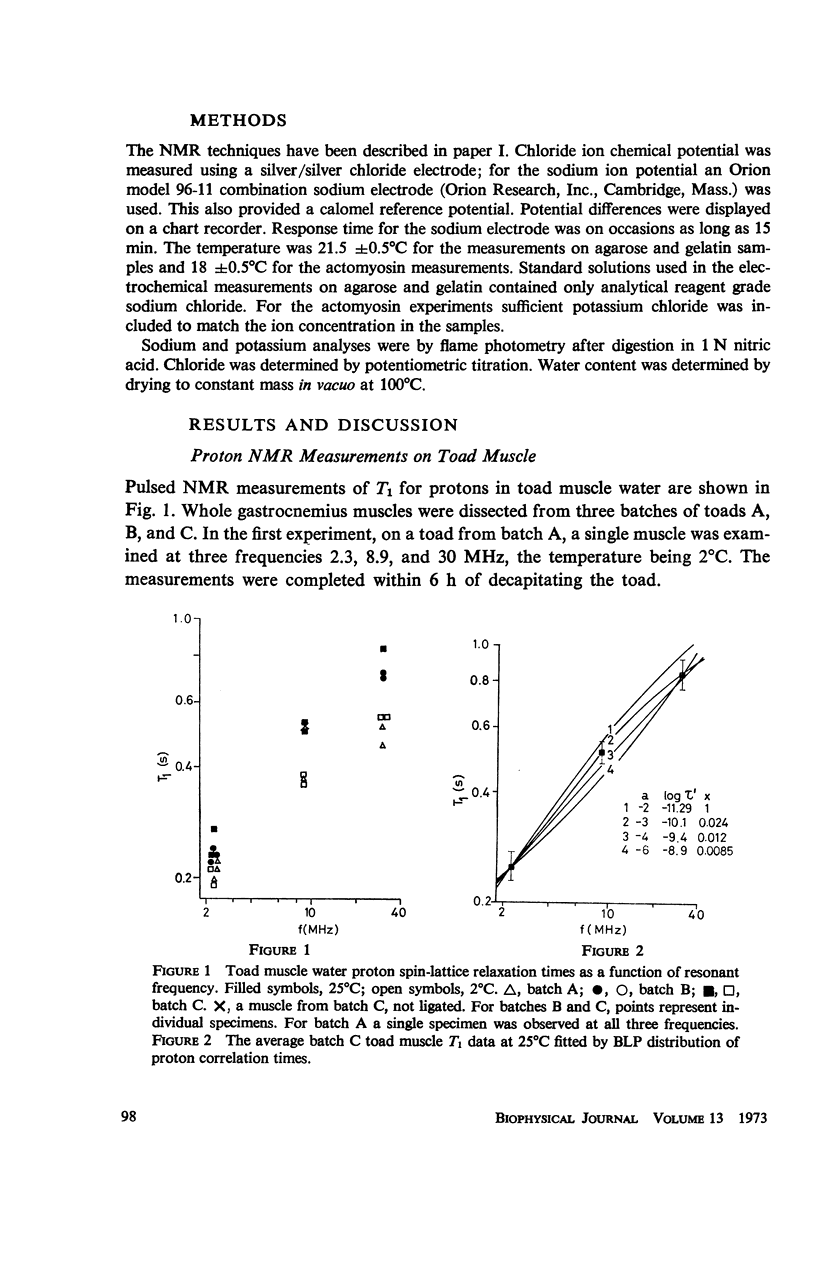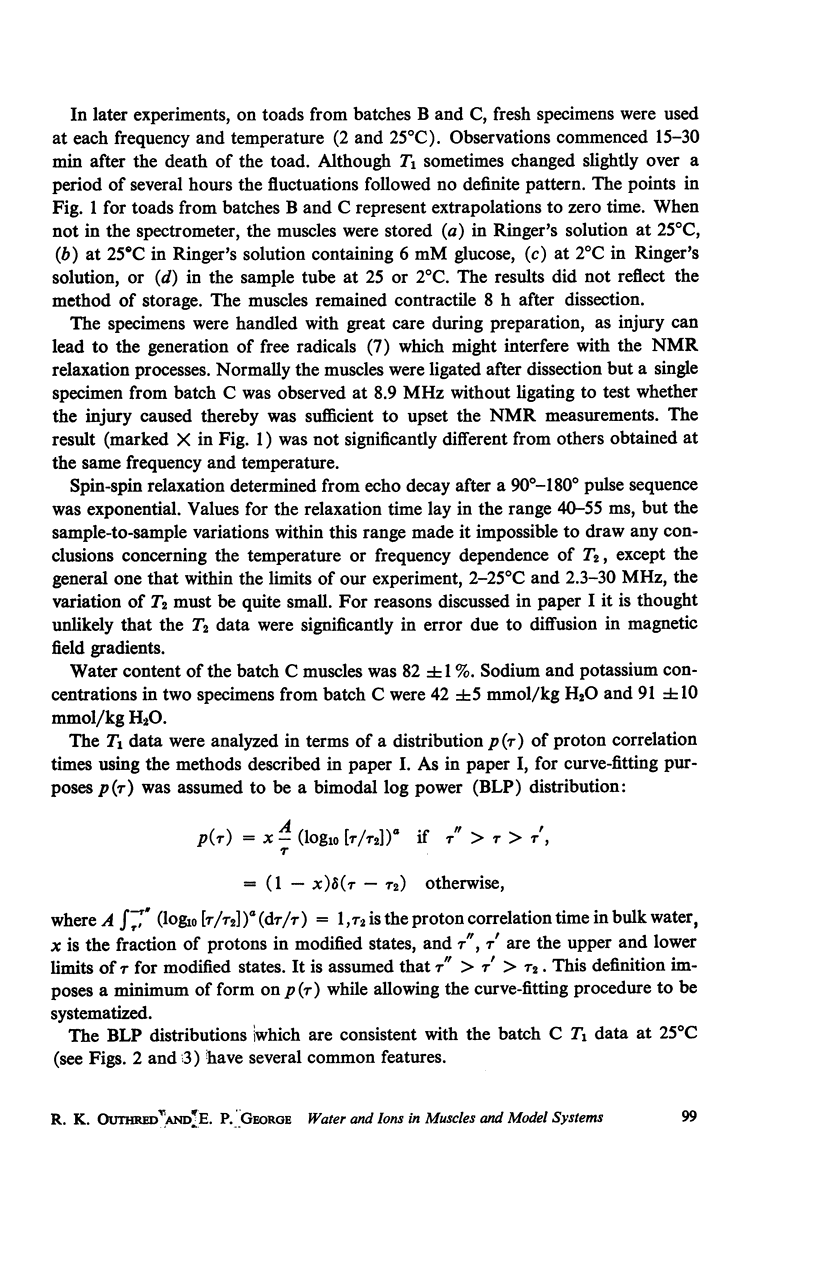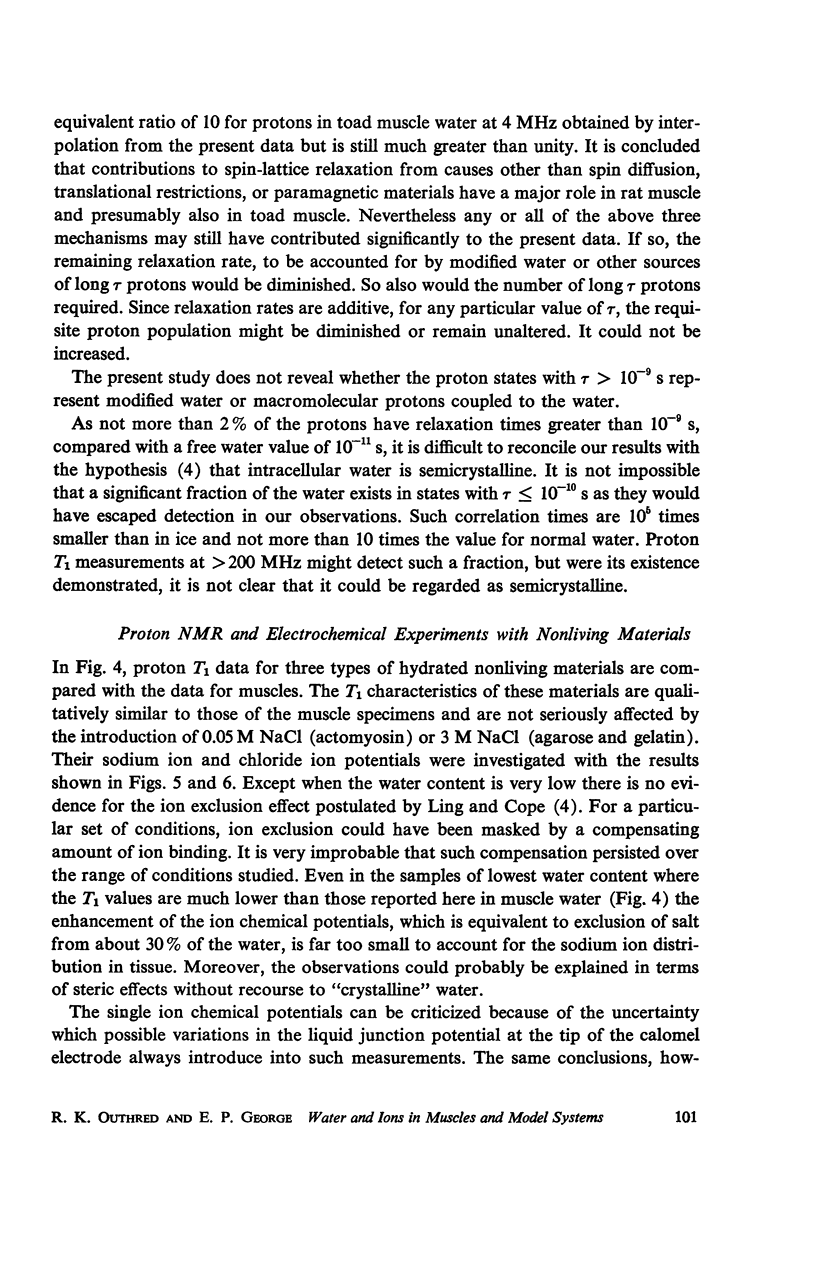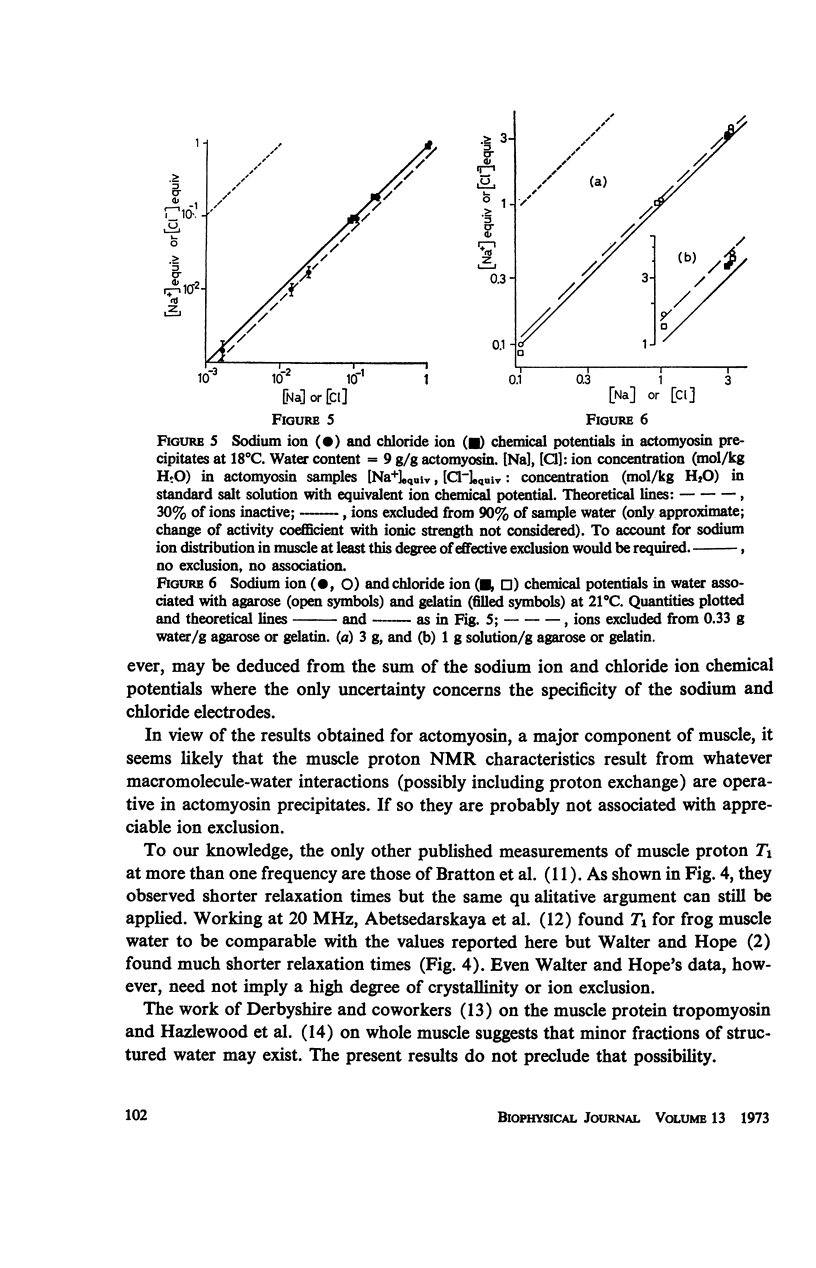Abstract
The nuclear magnetic reasonance (NMR) relaxation times of protons in toad muscle water have been measured at three frequencies: 2.3, 8.9, and 30 MHz. The results are analyzed in terms of a distribution of correlation times, and it is found that only a few percent of the observed protons have mobilities more than two orders of magnitude smaller than normal. Sodium and chloride ion chemical potentials in some hydrated materials with similar proton NMR characteristics to toad muscle have been found to be heightened, but not sufficiently to account for the distribution of sodium ions in muscle.
Full text
PDF






Selected References
These references are in PubMed. This may not be the complete list of references from this article.
- Commoner B., Woolum J. C., Larsson E. Electron spin resonance signals in injured nerve. Science. 1969 Aug 15;165(3894):703–704. doi: 10.1126/science.165.3894.703. [DOI] [PubMed] [Google Scholar]
- Cope F. W. NMR evidence for complexing of Na+ in muscle, kidney, and brain, and by actomyosin. The relation of cellular complexing of Na+ to water structure and to transport kinetics. J Gen Physiol. 1967 May;50(5):1353–1375. doi: 10.1085/jgp.50.5.1353. [DOI] [PMC free article] [PubMed] [Google Scholar]
- Cope F. W. Nuclear magnetic resonance evidence using D2O for structured water in muscle and brain. Biophys J. 1969 Mar;9(3):303–319. doi: 10.1016/S0006-3495(69)86388-5. [DOI] [PMC free article] [PubMed] [Google Scholar]
- Cope F. W. Spin-echo nuclear magnetic resonance evidence for complexing of sodium ions in muscle, brain, and kidney. Biophys J. 1970 Sep;10(9):843–858. doi: 10.1016/S0006-3495(70)86339-1. [DOI] [PMC free article] [PubMed] [Google Scholar]
- Glasel J. A. NMR relaxation in heterogeneous systems. Nature. 1970 Aug 15;227(5259):704–705. doi: 10.1038/227704b0. [DOI] [PubMed] [Google Scholar]
- Hazlewood C. F., Nichols B. L., Chamberlain N. F. Evidence for the existence of a minimum of two phases of ordered water in skeletal muscle. Nature. 1969 May 24;222(5195):747–750. doi: 10.1038/222747a0. [DOI] [PubMed] [Google Scholar]
- Outhred R. K., George E. P. A nuclear magnetic resonance study of hydrated systems using the frequency dependence of the relaxation processes. Biophys J. 1973 Feb;13(2):83–96. doi: 10.1016/S0006-3495(73)85971-5. [DOI] [PMC free article] [PubMed] [Google Scholar]
- Walter J. A., Hope A. B. Proton magnetic resonance studies of water in slime mould plasmodia. Aust J Biol Sci. 1971 Jun;24(3):497–507. doi: 10.1071/bi9710497. [DOI] [PubMed] [Google Scholar]


